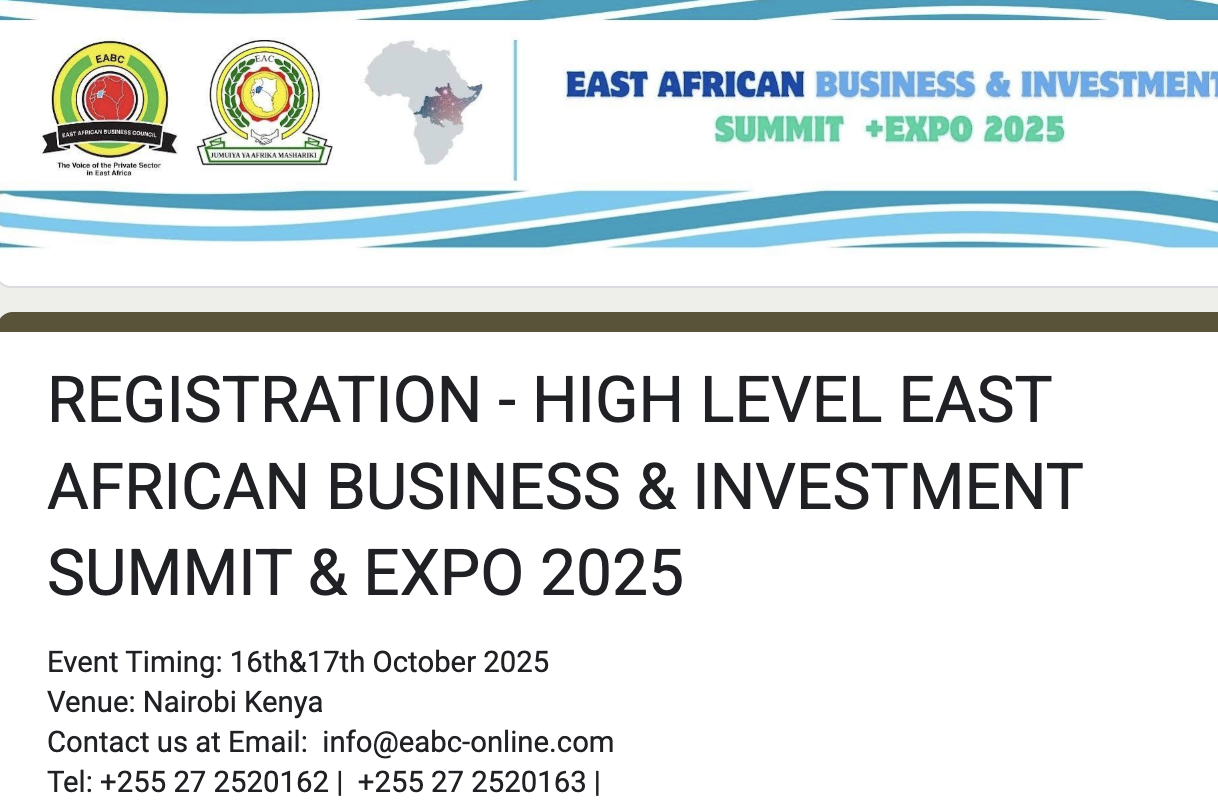
NAIROBI, Kenya – In just under three months, Nairobi will play host to a significant gathering of East African and international stakeholders at the East African Business and Investment Summit & Expo 2025. Set for October 16th and 17th, this event aims to put the private sector at the forefront of regional integration, with a keen eye on boosting trade both within and beyond the East African Community (EAC).
The summit’s theme, “Promoting Private Sector Driven Regional Integration for Increased Intra and Extra EAC Trade and Investment,” underscores a critical shift in focus for the EAC. While intergovernmental cooperation has long been the bedrock of regional integration efforts, there’s a growing recognition that tangible economic progress hinges on empowering businesses to drive trade and investment.
This year’s summit arrives at a particularly interesting time for East Africa. The broader African Continental Free Trade Area (AfCFTA) is steadily advancing, promising to unlock new market access across the continent. Simultaneously, the Tripartite Agreement (COMESA-EAC-SADC) is entering its implementation phase, further expanding regional trade possibilities. These pan-African initiatives, coupled with global shifts like climate change and the ongoing debates around de-globalization, create a complex but potentially rewarding landscape for East African businesses.
A key challenge for the EAC has been the persistent non-tariff barriers (NTBs) that hinder the free movement of goods, services, and capital across borders. While the EAC has made strides in establishing a Customs Union and Common Market, businesses often report encountering hurdles ranging from inconsistent customs procedures to lengthy bureaucratic processes. The 2025 summit is expected to address these issues head-on, with a dedicated “CEOs Industry Round Table with Ministers” specifically targeting trade in services and manufacturing. This direct engagement between the private sector and policymakers is a promising development, offering a more direct avenue for identifying and resolving practical impediments to business.
Beyond policy discussions, the accompanying Expo will offer a tangible showcase of East African products, services, and technological innovations. Such platforms are vital for fostering business-to-business (B2B) and business-to-government (B2G) connections, which are essential for stimulating new investment and trade deals. With over 600 delegates expected from across Africa and Europe, the networking opportunities could be substantial.
However, the success of the summit’s ambitious agenda will depend on more than just high-level discussions. Realizing the full potential of a private-sector-led integration requires sustained commitment from all EAC member states to harmonize regulations, improve infrastructure – particularly transport and logistics networks – and create a truly conducive environment for investment. While initiatives like the Standard Gauge Railway (SGR) are making progress, bottlenecks in infrastructure remain a significant concern for businesses looking to expand across the region.
As the EAC navigates its path towards deeper economic integration, the Nairobi summit serves as a crucial check-in point. It’s an opportunity for East Africa to not only reflect on past progress but also to strategically reposition itself as a dynamic and attractive hub for trade and investment in a rapidly evolving global economy. The countdown to October 16th will undoubtedly be watched closely by those with a vested interest in the region’s economic future.
